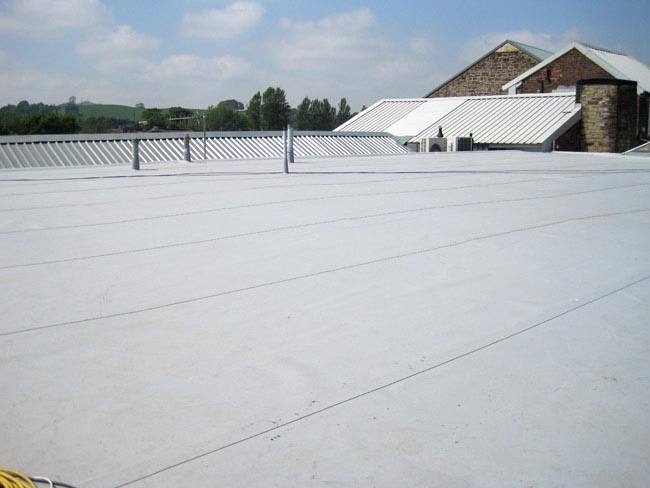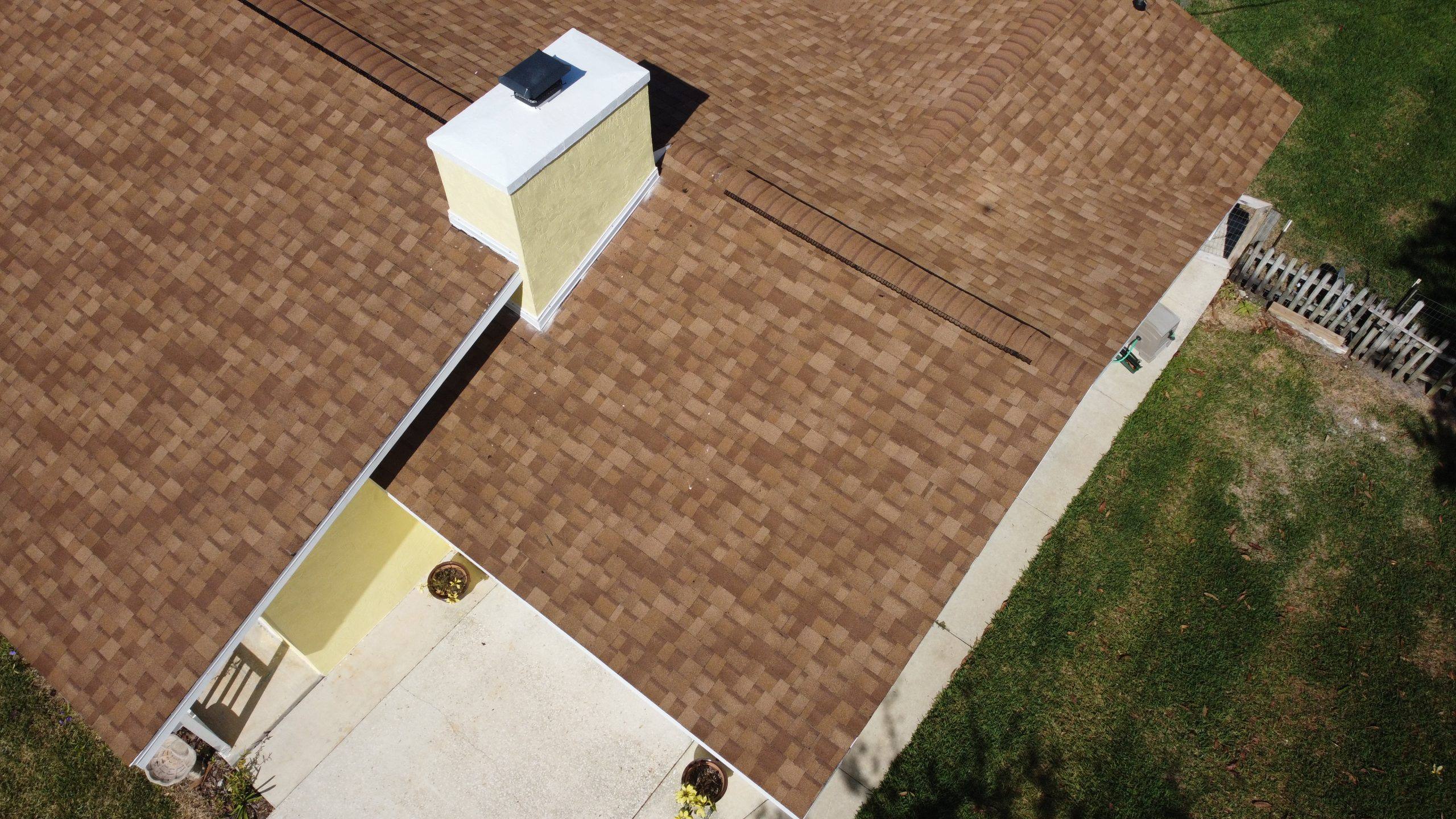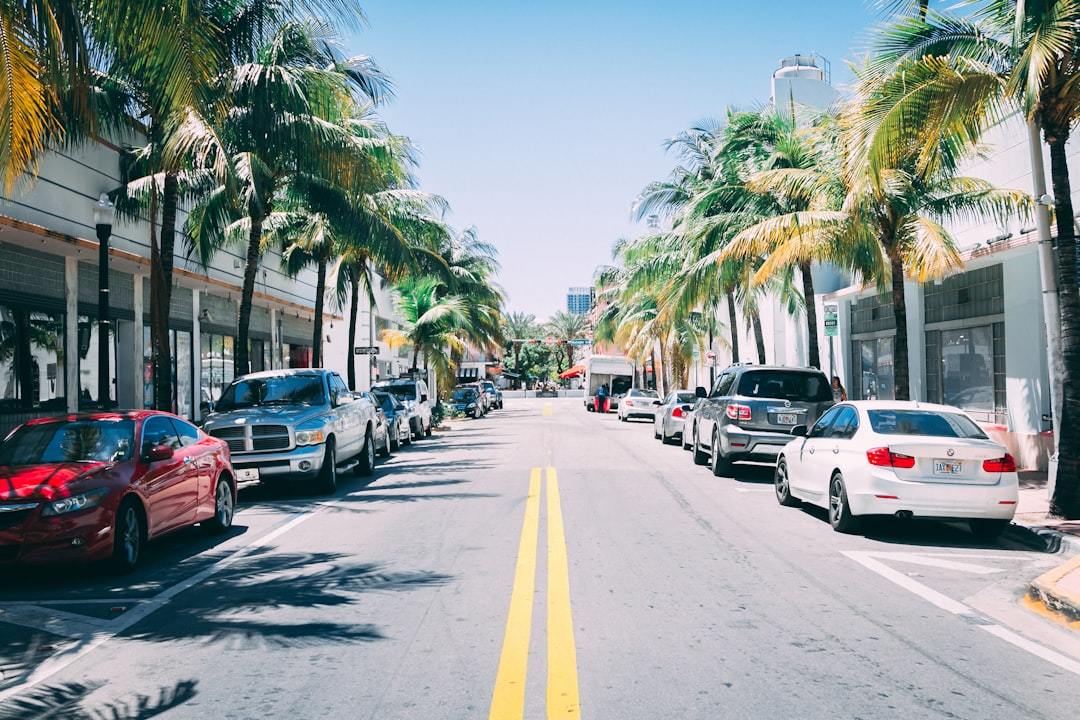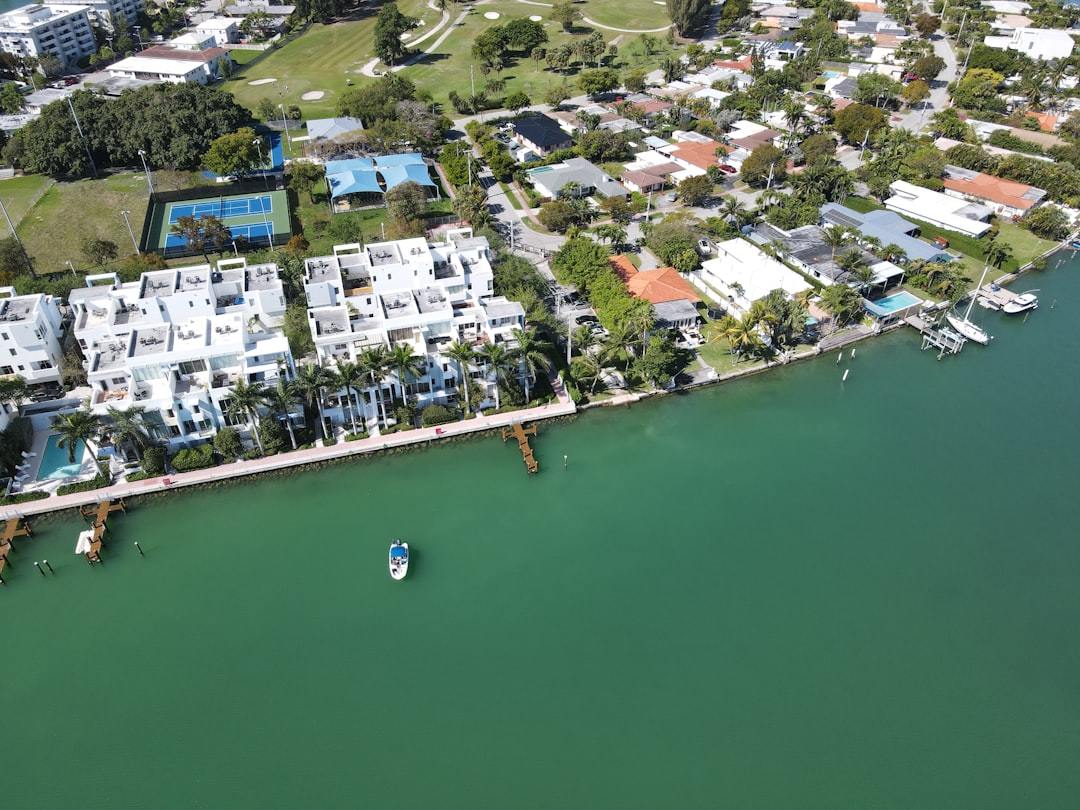Choosing a Commercial Roofing Company can be an overwhelming task.
Navigating the world of commercial roofing can be complex, with a myriad of options each offering unique benefits. In this blog post we’ll explain the various types of commercial roofing systems, from traditional built-up roofing to innovative green solutions. We’ll explore their unique characteristics, benefits, and why they might be the perfect fit for your commercial building. Let’s embark on this journey to find the roofing system that best suits your needs.
Understanding Commercial Roofing
Welcome to the world of commercial roofing.
This is where business starts, quite literally from the top.
A strong and reliable building begins with a solid roof overhead. Here at G&W Roofing we provide comprehensive commercial roofing services for your property, making it a worthwhile investment.
Difference Between Commercial and Residential Roofing
You might wonder – what sets apart residential roofs from their commercial counterparts?
While they both serve as shelter provided from nature’s elements, it goes beyond just providing cover.
Commercial roofs are typically larger in size than residential ones. They also often use different materials due to structural needs.
For instance, you’ll find more metal or flat concrete rooftops among commercial buildings compared to sloped shingles seen commonly in homes.
This brings us into our next section: types of popular commercial roof type systems like built-up roofing (BUR) membrane and thermoset EPDM roof membranes.
These options offer improved tensile strength ensuring durability under various weather conditions.
Exploring Types of Commercial Roofing Systems
The world of commercial roofing is vast and varied.
Different regions, climates, and building types call for different solutions.
Built-Up Roofing or BUR Membrane
A popular choice among businesses starts with built-up roofing (BUR).
Built-up roofing, commonly known as BUR, is one of the oldest and most reliable methods of installing a new roof. It consists of alternating layers of reinforcing fabric and bitumen (asphalt) and is finished with a top layer of aggregate, such as stone or gravel.
BUR systems are known for their superior durability and longevity. The multiple layers provide excellent protection against water, weather, and harsh sunlight, making it a great choice for commercial buildings in a variety of climates. The top layer of aggregate not only protects the underlying layers from damage but also provides a fire-resistant layer.
One of the significant advantages of BUR systems is their resistance to foot traffic and other mechanical damages. This makes them an excellent choice for buildings that require regular rooftop access. However, BUR systems can be heavier than other types of roofing systems and may require additional structural support.
Metal Roofing Systems
Metal roofs are a popular choice for commercial buildings due to their durability and design flexibility. They can be made from a variety of metals, including steel, aluminum, copper, and alloy strips, and they can be shaped into a wide range of designs to suit different architectural styles.
Metal roofs are known for their high resistance to extreme weather conditions, including high winds, heavy rain, snow, and even fire. They are also highly resistant to rust and corrosion, especially if they are treated with a protective coating.
In terms of energy efficiency, according to State Farm, metal roofs reflect the sun’s UV and infrared light rays that contribute to roof surface radiant heat, which can result in a 10-25% reduction in cooling costs. Furthermore, they are environmentally friendly as they are 100% recyclable at the end of their life.
Thermoset or EPDM Roof Membrane
EPDM (ethylene propylene diene terpolymer) is a type of synthetic rubber that is extremely durable and versatile. It’s known for its superior resistance to heat, UV rays, ozone, and cold temperatures, making it an excellent choice for climates with extreme temperature variations.
EPDM roofs are relatively easy to install, repair, and maintain, making them a cost-effective choice for many commercial buildings. They are available in both black and white, allowing building owners to choose the color that best fits their energy efficiency and aesthetic needs.
One of the significant benefits of EPDM roofing systems is their potential lifespan. With proper installation and regular maintenance, EPDM roofs can last up to 30 years or more.
PVC & TPO Thermoplastic Roofs: A Green Solution?
Last but not least, we have PVC & TPO – two green choices when considering eco-friendly alternatives.
PVC (polyvinyl chloride) and TPO (thermoplastic olefin) are types of thermoplastic roofing systems. These systems are gaining popularity for their durability, energy efficiency, and environmental sustainability.
PVC and TPO roofs are highly resistant to fire, wind, chemicals, and punctures. They are also flexible, which allows them to accommodate a building’s movement or settling over time.
In terms of energy efficiency, PVC and TPO roofs are highly reflective, which helps reduce the amount of heat absorbed by a building, leading to lower cooling costs in the summer.
From an environmental perspective, many PVC and TPO roofing products are ENERGY STAR rated and can be recycled at the end of their life, contributing to a lower environmental impact.
Eco-Friendly Options And Their Benefits For Commercial Buildings
Choosing eco-friendly roofing options for your commercial buildings doesn’t mean compromising on style or durability. In fact, many of these green alternatives offer improved tensile strength and longevity compared to traditional materials. They also come with a host of other benefits that make them an excellent choice for any commercial building.
One eco-friendly roofing option is the use of sustainable commercial roofing materials and systems that help reduce energy consumption, lower maintenance costs, and minimize the environmental impact of commercial buildings. These materials are often designed with special features that help to conserve energy, such as reflective coatings or light-colored materials that reflect sunlight away from the building. This not only helps to keep the building cool, reducing the need for air conditioning, but also contributes to the overall energy efficiency of the building.
Green roofs are another innovative solution that is gaining popularity in the commercial sector. These living structures provide excellent insulation while contributing positively towards biodiversity. They also offer aesthetic appeal and can even serve as recreational spaces, adding value to the property.
Metal Roofing Systems
Among the various options available for commercial roofing, metal roofing systems stand out for their unique blend of benefits. These systems are not only recyclable at the end of their life cycle, but they also offer superior durability and energy efficiency, making them an excellent choice for commercial buildings.
Metal roofs are made from a variety of materials, including steel, aluminum, copper, and zinc. Each of these materials offers its own set of advantages. For instance, steel and aluminum are known for their exceptional strength and durability, while copper and zinc roofs are prized for their longevity and corrosion resistance.
One of the most significant advantages of metal roofing systems is their lifespan. With proper maintenance, a metal roof can last for 40 to 70 years, which is significantly longer than traditional asphalt roofing materials that typically last for about 20 years. This longevity can result in substantial cost savings over the long term, as it reduces the need for frequent roof replacements.
Another key benefit of metal roofing systems as mentioned before is their energy efficiency. Metal roofs reflect solar radiant heat, which stated previously can reduce cooling costs by 10-25%. This makes them an excellent choice for commercial buildings located in warmer climates, such as our Florida east coast, where cooling costs can be a significant portion of a building’s total energy expenditure.
Metal roofs are also environmentally friendly. They are typically made from recycled materials and are 100% recyclable at the end of their life. This reduces the environmental impact of the roofing system and contributes to the sustainability of the building.
Furthermore, metal roofs are resistant to fire, mildew, insects, and rot. They can also withstand severe weather conditions, including heavy rain, snow, hail, and high winds. This makes them a reliable and durable choice for commercial buildings located in areas prone to extreme weather conditions.
Cool Roofs
In the realm of eco-friendly commercial roofing options, cool roofs have emerged as a smart and effective solution. A cool roof is designed to reflect more sunlight and absorb less heat than a standard roof, leading to a significant reduction in heat absorption and, consequently, lower cooling costs during the hot summer months.
The secret behind the efficiency of cool roofs lies in their reflective coating. This coating is designed to reflect more of the sun’s rays, reducing the amount of heat that penetrates the building. As a result, the building stays cooler, reducing the need for air conditioning and leading to significant energy savings.
PVC (Polyvinyl Chloride) and TPO (Thermoplastic Olefin) roofs are excellent examples of cool roofing solutions. These materials are designed to reflect sunlight and absorb less solar energy, which can significantly lower the temperature of your building. PVC and TPO roofs are particularly beneficial for flat and low-slope roofs that experience high amounts of moisture, making them a popular choice for many commercial roofs.
The benefits of cool roofs extend beyond energy savings. By reducing the heat absorbed by the building, cool roofs can also improve the comfort of spaces that aren’t air-conditioned, such as garages and covered patios. Furthermore, by lowering the roof’s temperature, cool roofs can extend the life of the roof, saving you money on maintenance.
The Benefits of Each Type of Commercial Roofing
Now that we have explained all the types of commercial roofing, it might help to have a list of what the advantages of each roof are.
Built-Up Roofing (BUR)
- Durability: BUR roofing materials can last between 20 and 30 years.
- Resistance: They are highly resistant to damage, including cracking, chipping, and warping.
- Protection: Thanks to their layered structure, they offer excellent protection against water, wind, and fire.
Metal Commercial Roofing Systems
- Longevity: Metal roofs can last between 40 and 70 years, making them a long-term investment.
- Resistance: They are highly resistant to wind, fire, and water, thanks to interlocking panels.
- Energy Efficiency: Metal roofs reflect solar radiant heat, which can reduce cooling costs by 10-25%.
EPDM Roofs
- Versatility: EPDM roofing is extremely durable and versatile, suitable for various climates and building designs.
- Durability: It has a long lifespan of up to 50 years.
- Weather Resistance: EPDM roofs are known for their excellent performance under various weather conditions, including extreme temperatures, sunlight, and moisture.
Cool Roofs: PVC & TPO Roofs
- Durability: These roofs are resistant to UV rays, punctures, chemicals, and bacterial growth.
- Energy Efficiency: Their high reflectivity can help reduce energy costs.
- Environmental Impact: PVC and TPO roofs are recyclable at the end of their life cycle.
The Importance of Regular Maintenance and Inspections
When it comes to commercial roofing, prevention is better than cure.
A robust maintenance routine can save you significant costs down the line by identifying potential issues early on.
Maintenance: The Key to a Strong Roofing System
Your business starts with your building, so maintaining its shelter provided should be a priority.
No matter what type of commercial roof system you have – whether built-up roofing or metal roofs – regular upkeep is crucial for ensuring longevity and performance.
Routine Checks for Your Commercial Built-Up Roof
As local commercial roofing expers G&W advises that property owners/managers schedule periodic checks especially after extreme weather conditions which could potentially damage their reliable building’s rooftop.
What Does A Check Involve?
- An inspection will typically include checking flashings (the most vulnerable part), drains and gutters for blockages,
- a thorough examination of any installed equipment such as HVAC units or skylights, and
- evidence of leaks inside the building like water stains on ceilings.
If all this seems overwhelming don’t worry. You can always rely on G&W Roofing, your local commercial roofing expers to offer free roof inspections. They are equipped with trained eyes capable of spotting minor problems before they become major headaches, saving both time and money in the long run.
FAQs in Relation to Commercial Roofing Company
What factors influence the choice of a commercial roof?
Several factors influence the choice of a commercial roof, including the size of the roof, the condition of the existing roof, roof access, desired R-value (a measure of thermal resistance), the choice of membrane, and the length of the warranty.
Can I re-roof without tearing off my existing commercial roof?
It depends on the condition of your existing roof and local building codes. In some cases, a new roof can be installed over the existing one, but in other cases, the old roof may need to be removed first.
What are the benefits of regular maintenance and inspections of a commercial roof?
Regular maintenance and inspections can help identify and address potential issues before they become significant problems. This proactive approach can extend the lifespan of the roof, prevent costly repairs, and ensure the roof continues to provide effective protection for the building.
What are some eco-friendly options for commercial roofing?
There are several eco-friendly options for commercial roofing, including metal roofing systems and cool roofs. These options offer various benefits such as recyclability, energy efficiency, and contribution to biodiversity.
Conclusion
Commercial roofing is a critical aspect of any business, providing protection and contributing to the building’s overall efficiency.
There are various types of commercial roofing systems, each with unique benefits – from traditional built-up roofing to innovative green solutions.
Built-up roofing (BUR) offers excellent durability and resistance to water, wind, and fire.
Metal roofing systems are known for their longevity, resistance to extreme weather, and energy efficiency.
EPDM roofs are versatile and durable, performing well under various weather conditions.
PVC and TPO roofs are durable, energy-efficient, and have a low environmental impact.
Green roofs reduce environmental impact, improve energy efficiency, and offer aesthetic appeal.
Regular maintenance and inspections of your commercial roof can prevent significant issues, extend the lifespan of the roof, and save costs.
Eco-friendly options like metal roofing systems and cool roofs offer benefits like recyclability, energy efficiency, and contribution to biodiversity.
Choosing the right commercial roofing system depends on various factors, including the size and condition of the roof, roof access, desired R-value, choice of membrane, and warranty length.
G&W Roofing offers free roof inspections, helping to spot minor problems before they become major issues.
Remember, a well-chosen and well-maintained commercial roof is an investment that pays dividends in the long run.
Author
-
Johnathan "John" Weaver is a seasoned roofing expert with a 12-year tenure at G&W Roofing, a company renowned for its residential and commercial roofing services in Brevard, Volusia, and Flagler counties since 1986. A resident of Edgewater, Florida since 1991, John possesses a deep understanding of the unique roofing needs of the Florida climate. When he's not crafting durable roofs, he enjoys fishing in Florida's tranquil waters and capturing the beauty of Edgewater through his photography. Join him as he shares valuable insights and tips from his extensive experience in the roofing industry at G&W Roofing.




